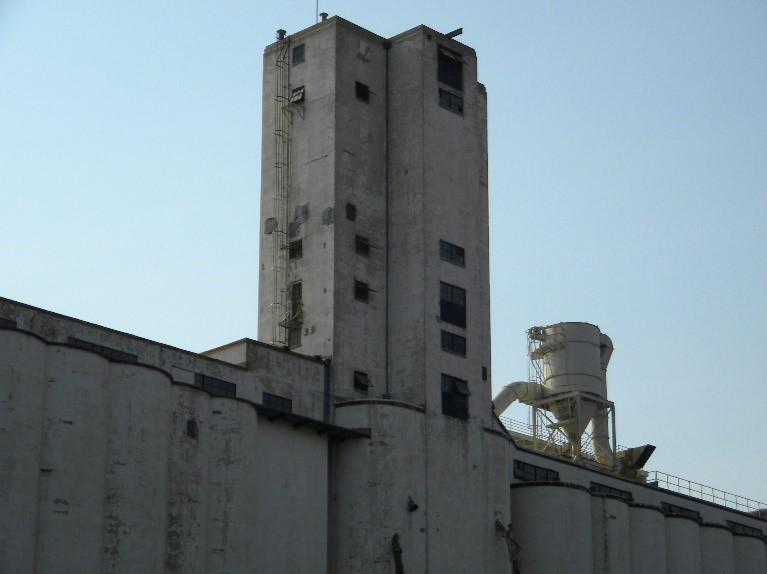The Importance of Controlling the Spread of Lead-Contaminated Airborne Lead Dust on Industrial and Commercial Projects
 Lead paint is one of those buried hazards of the past that still lives with us.
Lead paint is one of those buried hazards of the past that still lives with us.
You may want to view our lead paint treatment video
While it seems like forever ago, given that lead was removed from paint in the United States back in 1978, we sometimes forget that buildings tend to live longer than people. Given that more than 50% of every structure in the USA contains and the sheer amount of lead paint that still exists in homes, commercial structures, and industrial facilities, we can't just write off the dangers of lead paint as something that's over and done with….especially if we're going to start demolishing stuff.
How Far Can Lead-Contaminated Dust Spread?
In Detroit, a widespread program of home demolition has been going on for years. Buildings deemed as a hazard, or even just eyesores, were destroyed to much fanfare. Talk of renewal was widespread. Unfortunately, another thing that was widespread was lead dust from the paint in these buildings. According to Freep, this dust could easily travel 400 feet from the initial site. That's more than a football field's worth of heavy metal just waiting to possibly creep into people's lungs and bloodstreams. That's also just from one house; if you're working with larger structures, and just the wrong environmental conditions, then that lead dust could potentially spread a lot further.
That's just one example, though. Unfortunately, according to OPB, destruction of properties covered in lead paint is governed by very few rules. This has lead to widespread contamination because it's often cheaper to just knock a structure down. But once lead dust gets out of your control, there's no telling where it might wind up. People can transport it off site, as can wind, water, rain, and other potential vehicles. That can lead to serious damage to health, and the environment, as well as sizable clean-up fees, and even legal action if you're deemed responsible for where the dust has settled. This is why controlling the lead dust in the first place should always be a top priority.
Controlling the Spread of Lead-Contaminated Airborne Dust
Lead is still an important component of many building materials. It's durability, flexibility, price point and material properties make it a valuable product for developers in commercial and industrial projects. Unfortunately, there are also many drawbacks in lead. First and foremost are the health concerns. Lead dust can permanently impair lungs and brain functioning in the people it effects, especially children. For this reason, it is extremely important to control its spread. According to OSHA, there are several ways to control lead dust.
Substituting Engineering Processes
Big commercial or industrial construction projects do not use just one method of construction. There are multiple ways to build and create beautiful structures. Some of these methods control lead dust much more effectively. Builders can use powerful "vacuum blast cleaning, wet abrasive blast cleaning, shrouded power tool cleaning" or other methods to attempt to keep dust out of the air as they work. Additionally, as they work engineers can use "mobile hydraulic shears instead of a cutting torch" to quickly, cleanly and professionally separate materials while trying to keep from depositing lead dust in the air.
Ventilation
For the health and safety of workers or any visitors, ventilation is crucial. For example, engineers need to deliver portable local ventilation systems to work sites that clean and filter the air. Dilution ventilation can also be used. This increases the amount of clean air in the area to reduce the lead infiltrated area as an overall percentage. That potentially improves the safety of the site.
Some types of specialty paint sealants can also minimize airborne lead spread. In this way, you can protect yourself and your employees from serious lead poisoning potential. ECOBOND® - LEAD DEFENDER® is the nation’s leader in developing and distributing products that improve the protection of human health and safety from the hazards of lead in the home, workplace, and the environment. With over 15 years in patented and proven success, the ECOBOND® - LEAD DEFENDER® family of products have been extensively used in successfully treating lead hazards in over 11,000,000 tons of material while serving over 100,000 customers in the United States and Internationally.
To learn more visit www.EcobondPaint.com

 ECOBOND® - Lead Defender® announces new research confirming the efficacy of lead treatment protocols with demonstrated benefits by third party validation of a novel, low cost Lead Contaminated Surface Treatment (LCST). This treatment effectively treats and seals lead contaminated surfaces; thereby mitigating the potential for lead exposure hazards to humans and the environment.
ECOBOND® - Lead Defender® announces new research confirming the efficacy of lead treatment protocols with demonstrated benefits by third party validation of a novel, low cost Lead Contaminated Surface Treatment (LCST). This treatment effectively treats and seals lead contaminated surfaces; thereby mitigating the potential for lead exposure hazards to humans and the environment.